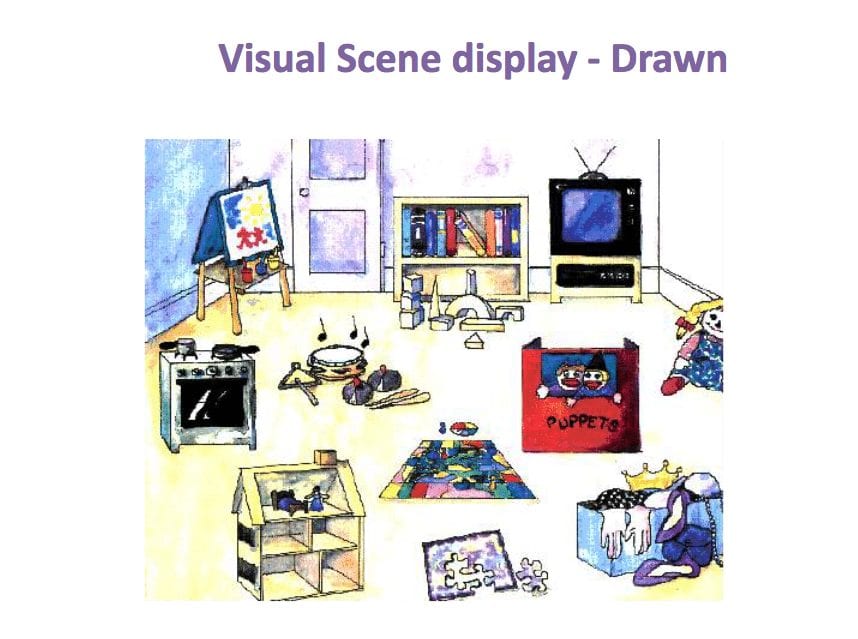Innovative Communication Techniques for Individuals with Autism

Grid displays, or as Dr. Shane described, grate-like screen arrangements containing targets in which symbols are placed, used to be the most common way to teach communication skills to minimally verbal autistic individuals. However, using visual scene displays instead, which give context to objects or events and are more realistic, can be a better way to teach certain children. “We might want to think about how we begin to introduce materials to individuals on the autism spectrum,” he said. He suggested starting by teaching visual scenes, then making your way toward grid displays, and eventually transitioning to text.
The VIS is an instructional method for teaching language that is especially useful for individuals with moderate to severe autism. It takes a functional approach to language so the individual can communicate with practical, everyday communication exchanges. The VIS uses technology to show visual symbols, maintain children’s attention, and provide compelling multimedia language instruction. Dr. Shane explained that the VIS should not be used a couple times a week, but rather integrated into everyday communication.
He then described how consumer products can be used to provide Just In Time Communication to individuals with autism. Just In Time Communication allows for the delivery of support on an as-need basis and content customized to the individual’s strengths. Wearable technology, like the Apple Watch, allows for discrete support that is there whenever the individual needs it. In a paper published in the Journal of Autism and Developmental Disorders, it was found that scene cues, symbols that represent an entire event or activity, can be successfully interpreted on the Apple Watch.
QR codes can be repurposed to provide in-the-moment directives as visual prompts for individuals rather than being told to do something. They can be placed in a visual scene display to provide labels for objects or directions for activities. Dr. Shane also went into the possibility of using the Amazon Echo to deliver a command to a device. While this product did not work as well for this particular application, he explained, he is working on testing how the Google Home might work in this situation. By repurposing technology to provide Just In Time Communication, we can provide efficient support to individuals with autism.
This broadcast was hosted by edWeb.net and sponsored by Monarch Center for Autism, STAR Autism Support, and VizZle.
This article was modified and published by eSchool news.
About the Presenter
Dr. Howard C. Shane, Ph.D., CCC-SLP is Associate Professor at Harvard Medical School and Director of the Center for Communication Enhancement and the Autism Language Program at Boston Children’s Hospital, where he has worked for more than three decades. He has been associated with Monarch Center for Autism for more than a decade, assisting Monarch School with integrating technology and visual supports into the overall curriculum. He has designed more than a dozen computer applications used widely by individuals with disabilities and holds two U.S. patents. His technologies have led to the creation of three technology companies that create products for people with disabilities. Dr. Shane has received Honors of the Association Distinction and is a fellow of the American Speech and Hearing Association. He is the recipient of the Goldenson Award for Innovations in Technology from United Cerebral Palsy Association. Dr. Shane is the author of five books and has written numerous papers and chapters on severe speech impairment, lectured throughout the world on the topic, and produced numerous computer innovations enjoyed by persons with complex communication disorders. He’s been featured on 60 Minutes, Larry King Live, Dateline, 20/20, and Frontline.
Join the Community
Teaching Students with Autism is a free professional learning community that provides ideas and resources for teachers working with students with autism, particularly advances in technology that can lead to significant breakthroughs in communication and learning. This is a collaborative community where educators can share information to help support the needs of students with autism.
About the Sponsors








Comments are closed.